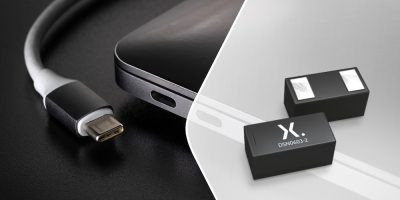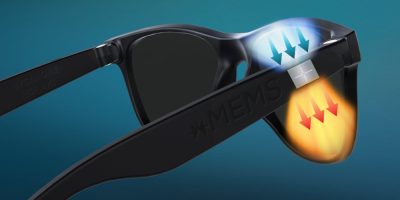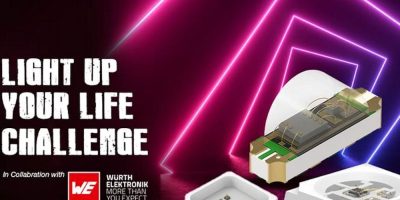Raltron Electronics has announced the launch of its next-generation MEMS Speakers, engineered to set new benchmarks in miniature audio performance for wearables, hearables, smart eyewear, hearing aids, and other ultra-compact audio applications.
Sector News
Nexperia launches ESD protection diodes for USB4 and Thunderbolt
Nexperia has introduced a new series of five high-performance protection 1 V diodes that provide optimised protection for AC-coupled radio-frequency (RF) transmission lines against electrostatic discharge (ESD) events, surge currents and short circuit conditions. These diodes – examples include the PESD1V0C1BSF and PESD1V0H1BSF – are ideal for safeguarding USB4 and Thunderbolt interfaces found in various applications including cellular handsets, portable electronic devices, communication systems, as well as computers and other peripherals.
µCooling Fan-on-a-Chip solution for XR smart glasses delivers in-frame active thermal management
xMEMS Labs has announced the expansion of its revolutionary µCooling fan-on-a-chip platform into XR smart glasses, providing the industry’s first in-frame active cooling solution for AI-powered wearable displays.
element14 Community launches global LED design challenge with Würth Elektronik
element14, an Avnet Community, has launched a new global design challenge in collaboration with Würth Elektronik. This new competition invites engineers, makers and hobbyists to develop a prototype or test rig using Würth Elektronik’s cutting-edge SMD LEDs with Integrated WL-ICLED Controller.
About Weartech
This news story is brought to you by weartechdesign.com, the specialist site dedicated to delivering information about what’s new in the wearable electronics industry, with daily news updates, new products and industry news. To stay up-to-date, register to receive our weekly newsletters and keep yourself informed on the latest technology news and new products from around the globe. Simply click this link to register here: weartechdesign.com







